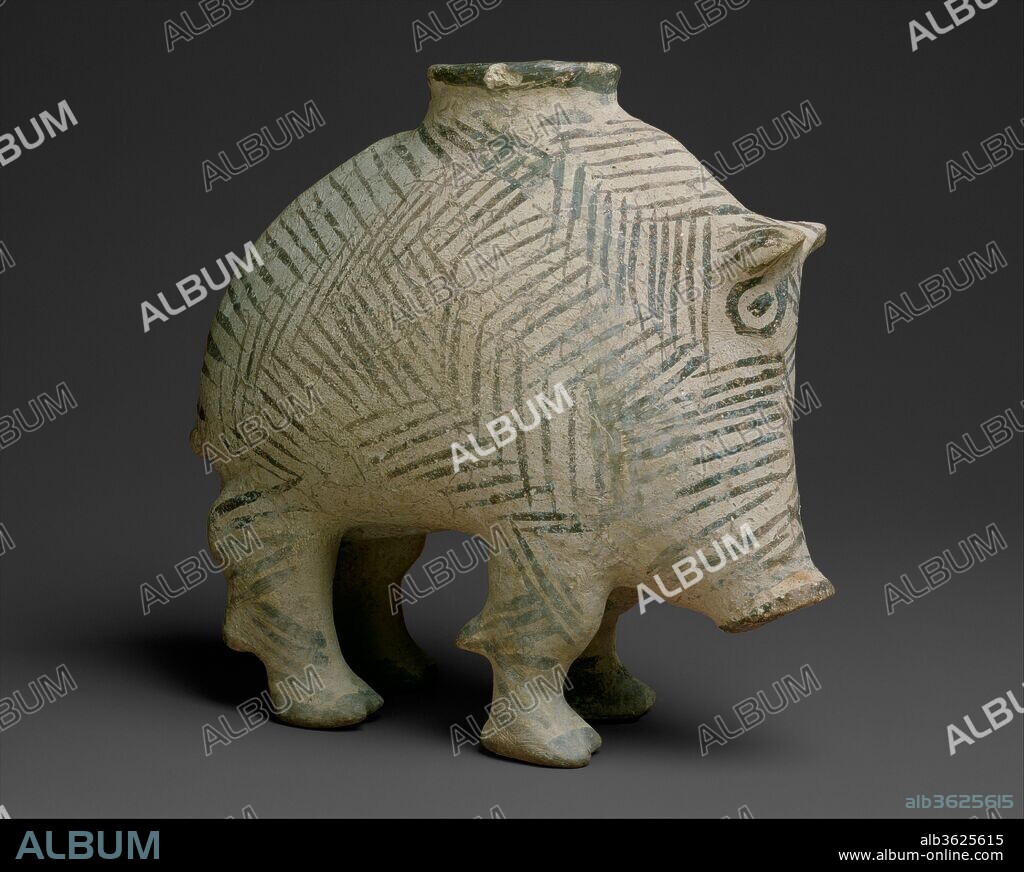alb3625615
Vessel in the form of a boar

|
Añadir a otro lightbox |
|
Añadir a otro lightbox |



¿Ya tienes cuenta? Iniciar sesión
¿No tienes cuenta? Regístrate
Compra esta imagen

Título:
Vessel in the form of a boar
Descripción:
Ver traducción automática
Vessel in the form of a boar. Culture: Proto-Elamite. Dimensions: 5.71 in. (14.5 cm). Date: ca. 3100-2900 B.C..
This ceramic vessel takes the form of a standing wild boar. The body is hollow, serving as a container, with a small round rim atop the center of the back and a hole pierced through the snout. The vessel could have been filled through the larger hole in the back while the smaller hole in the snout was held closed with a thumb, allowing the liquid to flow out once the snout was uncovered. Made of fine clay with a smoothed surface, the vessel is decorated in dark brown paint on buff-colored ceramic. The sharply angled hatching covering the vessel evokes the boar's bristly hide, especially along the spine, where it is arranged in a vertical row. The eyes are indicated by circles with a central dot, just below the small, alertly raised ears. The split hooves and fetlocks are modeled in clay. The boar's hunched posture lends the vessel a sense of potentially explosive movement, and reminds the viewer that wild boars are fierce animals that pose dangers to crops in the field, and to the hunters pursuing them. Similar zoomorphic, or animal-shaped, vessels are especially characteristic of the Proto-Elamite period (3100-2900 B.C.) in southwestern Iran.
Técnica/material:
Ceramic, paint
Periodo:
Proto-Elamite
Museo:
Metropolitan Museum of Art, New York, USA
Crédito:
Album / Metropolitan Museum of Art, NY
Autorizaciones:
Modelo: No - Propiedad: No
¿Preguntas relacionadas con los derechos?
¿Preguntas relacionadas con los derechos?
Tamaño imagen:
4192 x 3354 px | 40.2 MB
Tamaño impresión:
35.5 x 28.4 cm | 14.0 x 11.2 in (300 dpi)
Palabras clave:
 Pinterest
Pinterest Twitter
Twitter Facebook
Facebook Copiar enlace
Copiar enlace Email
Email
